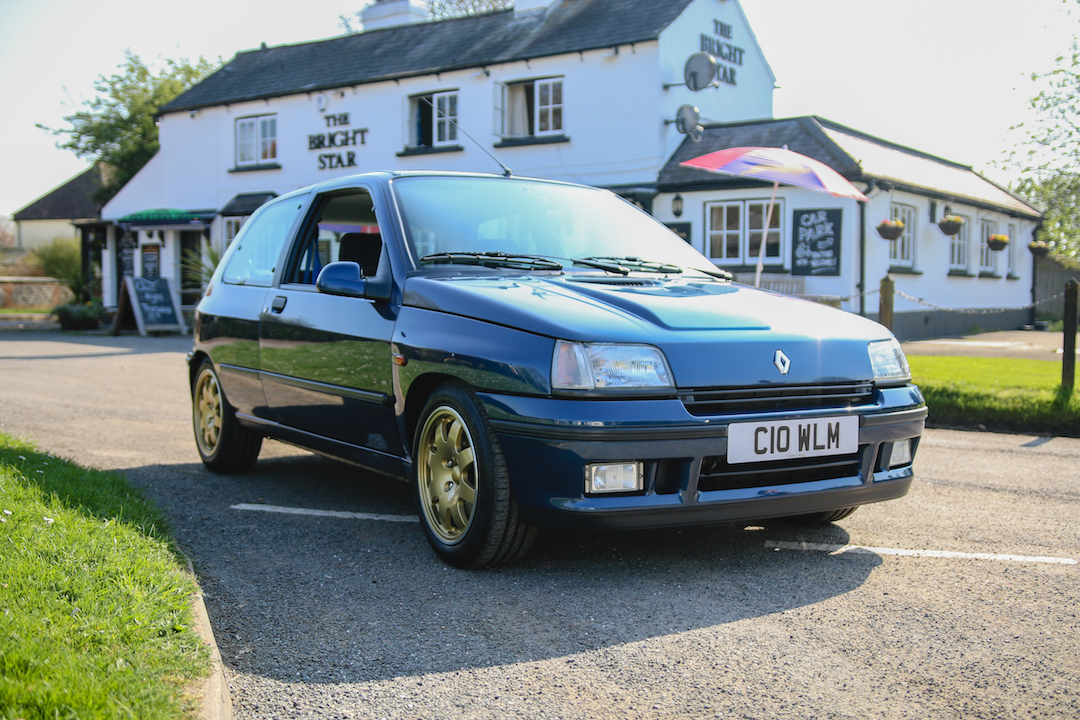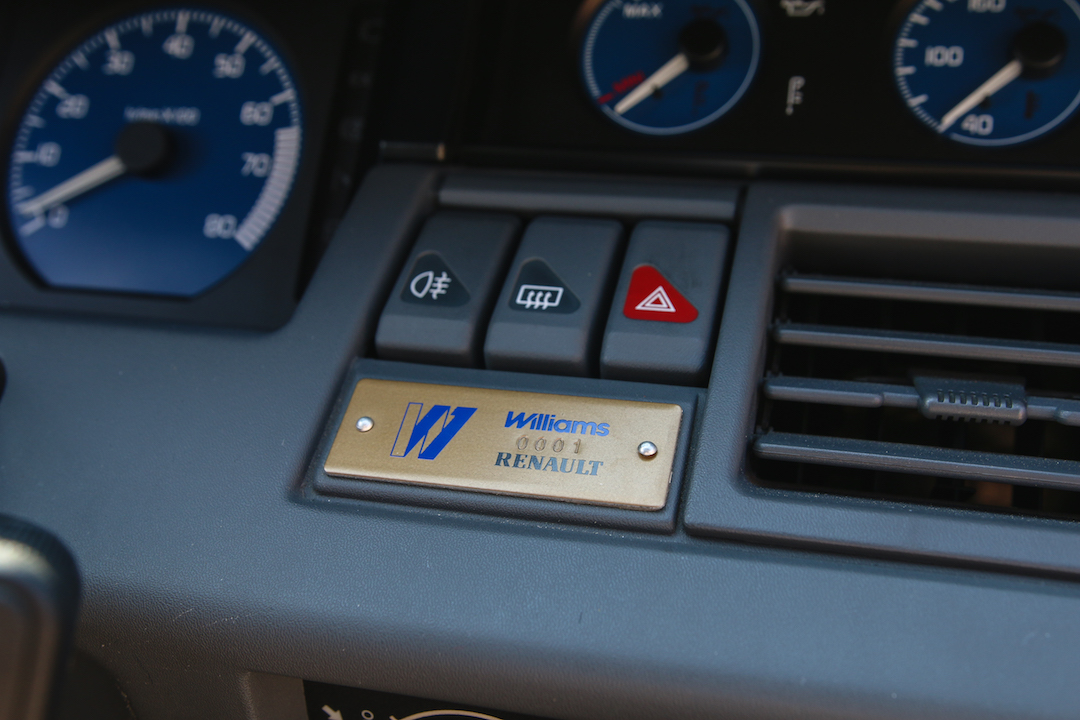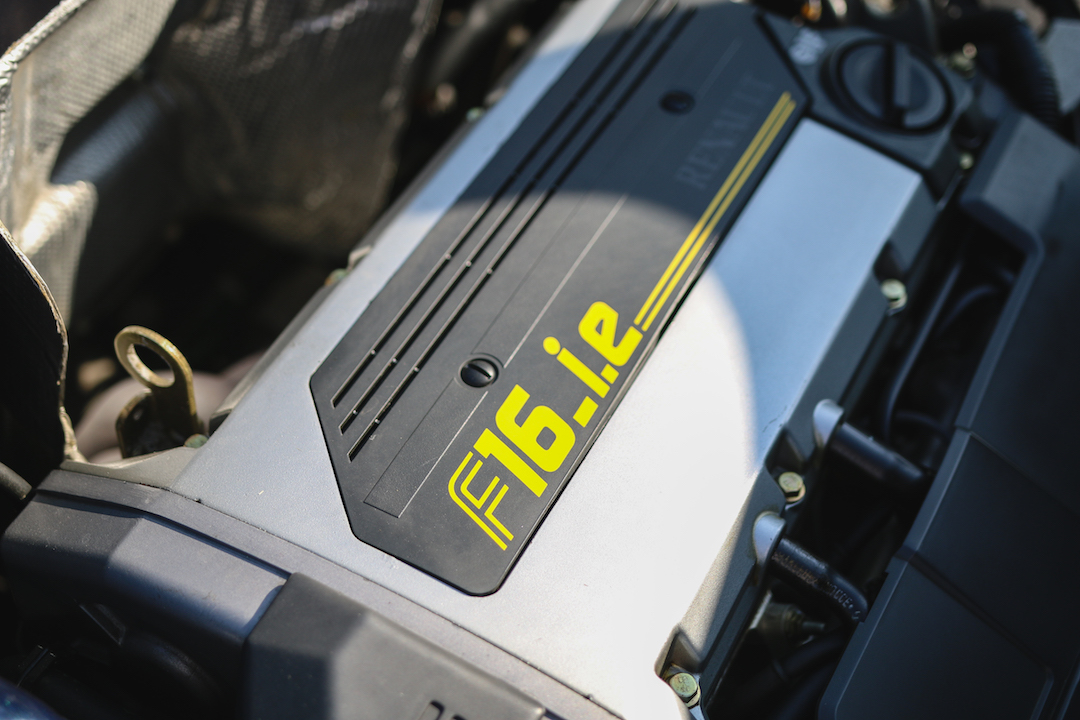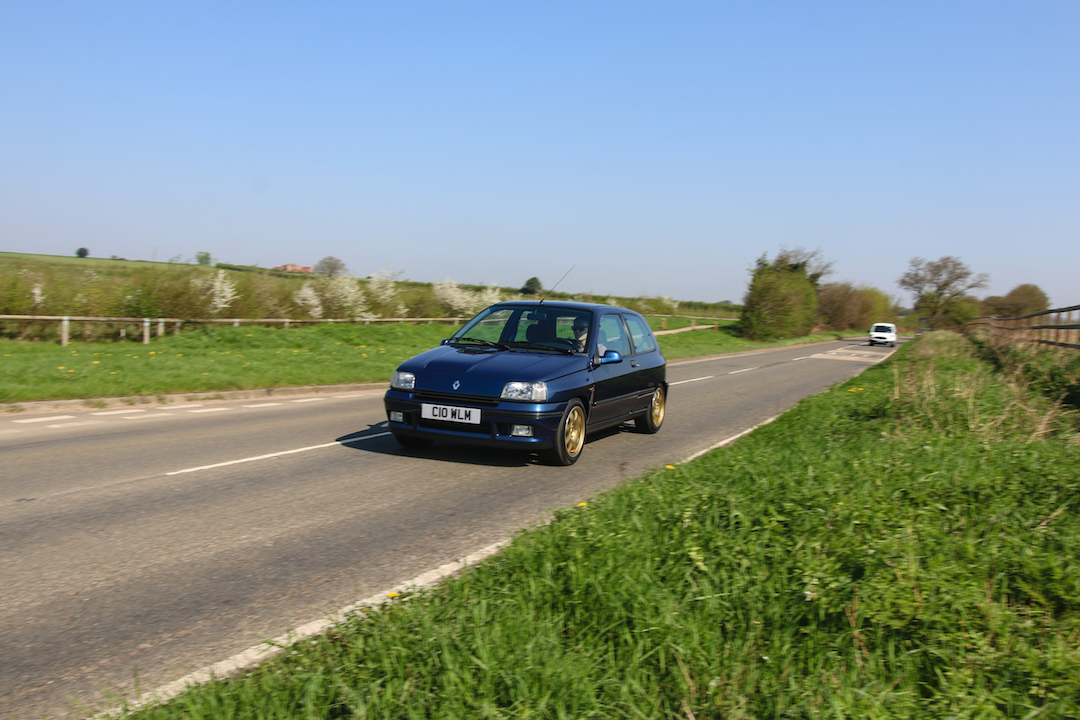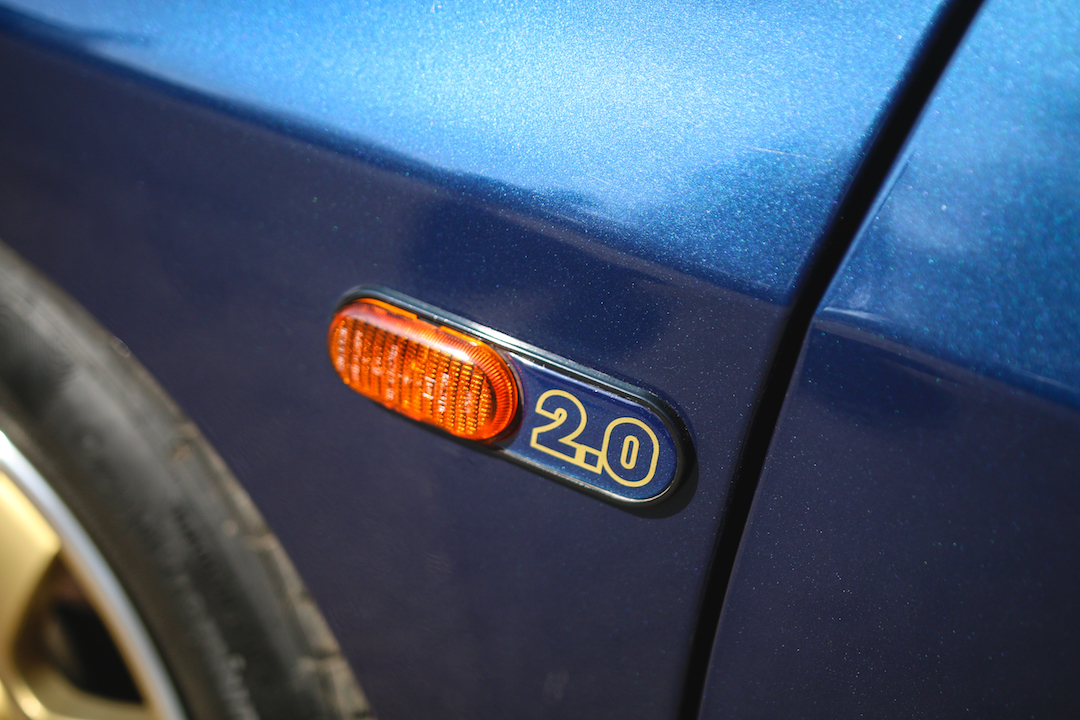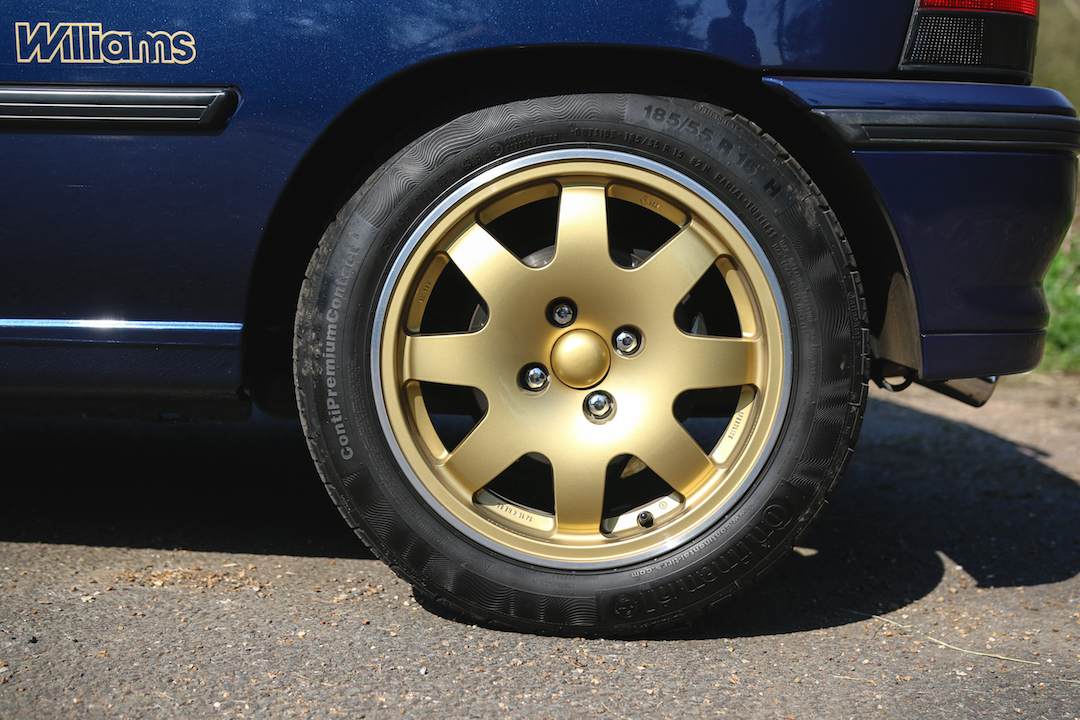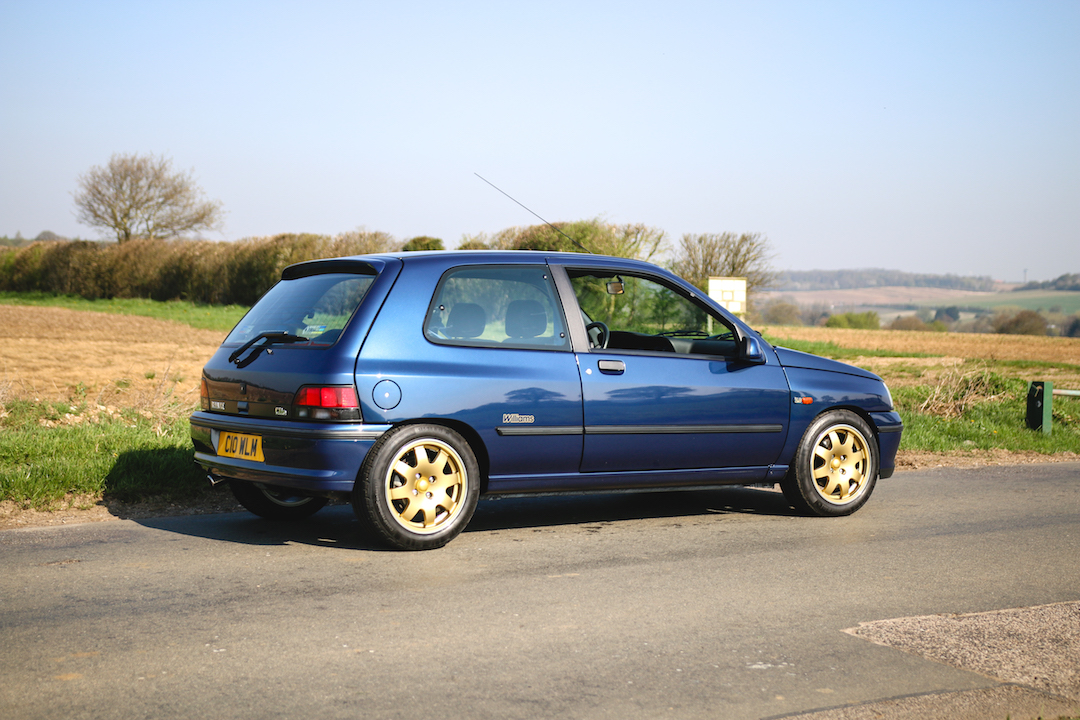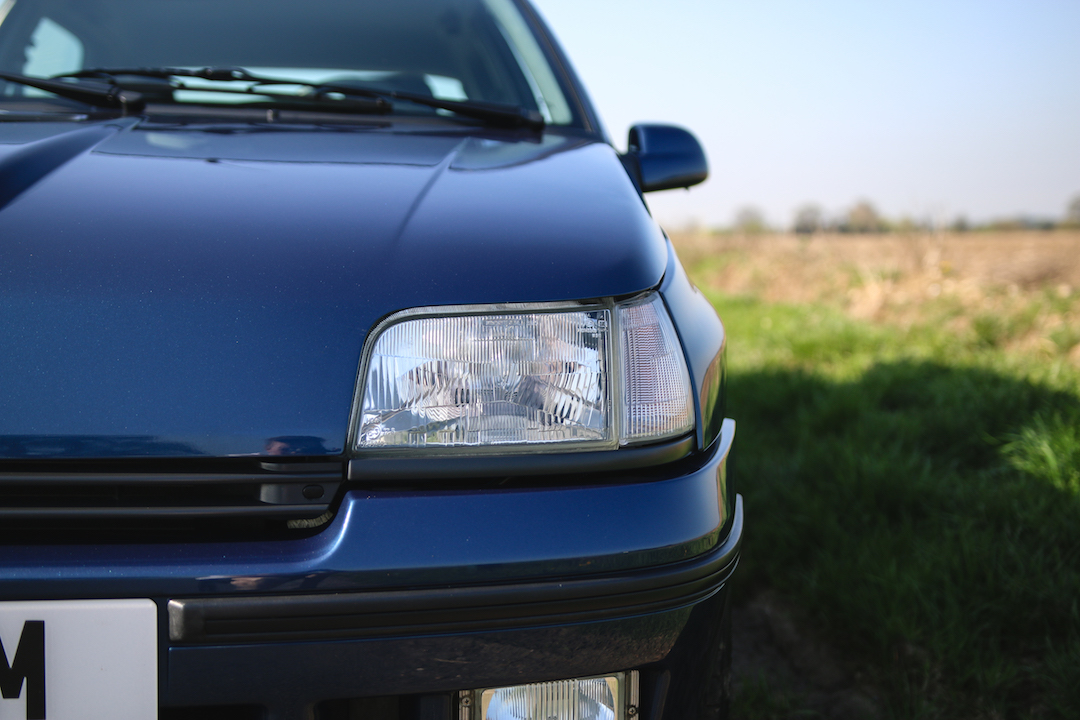Sorry Subaru, Renault rocked the blue-paint-and-gold-wheels look first. Like the Impreza, the Clio Williams’ colour scheme was inspired by racing, specifically Alain Prost’s 1993 championship-winning Williams-Renault FW15C. Instantly iconic, it was the icing on the gâteau for one of history’s greatest hot hatches.
Twenty-five years later, a blue and gold Clio has been disgorged from a covered trailer outside my office. And several men who should know better – me included – have just gone collectively weak at the knees. With 15-inch Speedline alloys, Williams decals and a tell-tale bonnet bulge, it looks small and surprisingly subtle – yet so damn cool.
This isn’t just any Williams either: a plaque on the dashboard reads ‘0001’. The car was originally gifted to F1 team boss Frank Williams, but is now a museum piece. It’s done just 3,500 miles from new and, until recently, occupied pride of place at Renault HQ. We have strict orders to ‘handle with care’.
The problem is, the Clio has other ideas. From the moment I edge out of the car park, it’s raring to go – a clenched fist brimming with kinetic energy. The non-turbo 2.0-litre engine feels potent and ebullient, serving up a sustained shove from tickover to 6,500rpm. Peak power of 147hp is modest by 2018 standards, but so is the Clio’s 990kg kerb weight. The official figures are 0-60mph in 7.8 seconds and 130mph flat-out.
The Williams isn’t simply about straight-line speed, though. Its ability to blitz a B-road is what confers legend status. All-round independent suspension means it clings to corners like a tenacious terrier, covering ground at speeds that would shame many sports cars. There’s abundant feel through the slightly-too-horizontal steering wheel, while the gearshift is slick and snappy. Just beware the spectre of lift-off oversteer – a trait the Clio shares with the equally epochal Peugeot 205 GTI.
The Williams is good as I’d hoped: a joyous and life-affirming experience. That wide-eyed teenager has matured into a sceptical journalist, yet I’m childishly besotted. Unfortunately, I’m now driving in a manner that I suspect Renault would disapprove of. Best quit while I’m ahead.
Back in the office, a quick trawl through the classifieds brings me down to earth with a bump. There’s a restored Clio Williams with over 100,000 miles advertised for £12,995, while even a former Cat D write-off is £5,995. Heaven knows what Renault’s near-perfect example is worth. As with the 205 GTI, it seems this ship has sailed.
Still, if you can afford one, the Williams is a 24-carat modern classic. The main issue is rust, particularly around the rear wheelarches and boot floor. Look for evidence of accident damage, such as uneven panel gaps, and check all the electrics work. On a test-drive, check for blue smoke from the exhaust and ensure the clutch and gears engage smoothly. If the chassis feels anything other than pert and poised, new dampers may be needed.
Rave reviews meant Renault built far more cars than originally planned: around 12,000 in total. Only the initial run of 5,400 had a numbered plaque, but subsequent Williams 2 and Williams 3 versions are scarcely less sought-after.
Originality, condition and service history are what counts here.
